|
|
|
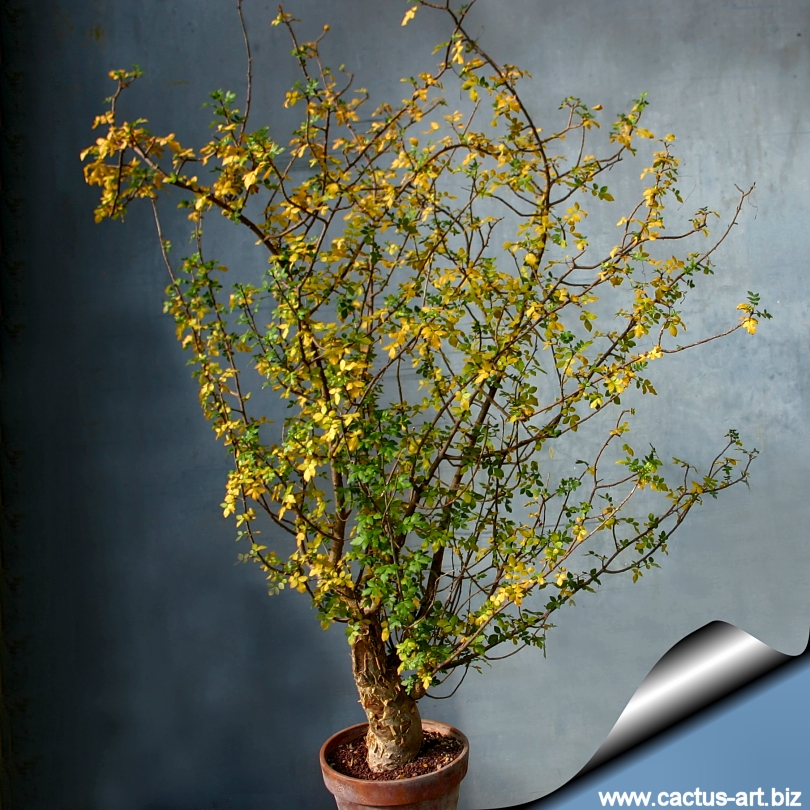
Bursera fagaroides ( in
Autumn )
Perhaps this is the nicest species of the genus, it has a thick caudex
and leaves that release a
delightful citrus odour when crushed. Plants remain dormant much of the year, leafing out only
with the onset
of hot summer weather. They defoliate in Autumn, making an attractive
display as the leaves change to yellow, orange and red.
|
|
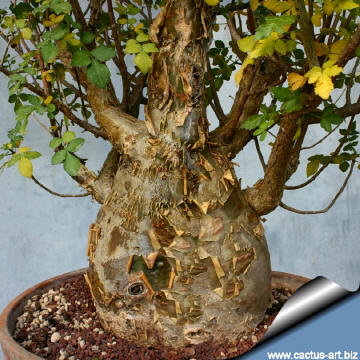
|
Description: B. fragarioides is a
shrub or small tree up to 4.5 m tall. Develops a swollen short, trunk
(caudex), Bark is tight and smooth, very attractive, reddish brown and
peeling to reveal grey-green. Twig are widespreading, resinous and stout
but flexible, reddish brown.
Leaf: Alternate, pinnate with 5-11 aromatic leaflets per leaf
broadly lanceolate, entire, toothed or serrate, 0,5 to 3cm long, up
to10cm overall.
Flower: Small, creamy white, borne on long stalks, may be
clustered or solitary. The fruit is brown maturing in late fall.
|
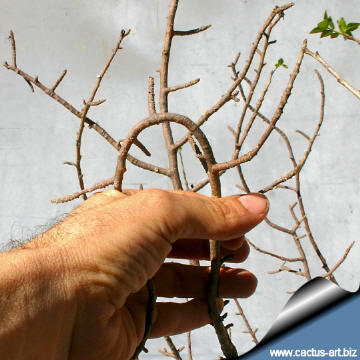 |
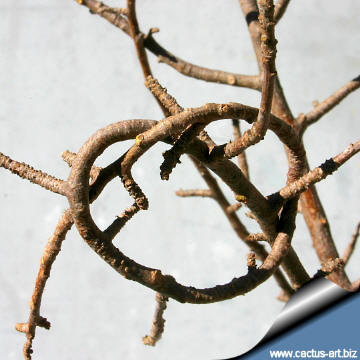 |
|
Twigs are very flexible, you can make a knot
whit them!!!
Cultivation: Hardy to -4°C they prefer a dormant, winter rest
period, water regularly in summer keep almost dry in winter. Need full
sun. It can be trained as a bonsai, pinch and prune plants in spring and
summer but taper off in autumn so the tree can store energy for the
winter instead of using it to put on new growth before resting.
Propagation: By seeds that are are red, and germinate quite easily
or (rarely) by cuttings.
|
|


Advertising
|
|
|
|
|
Family:
Burseraceae
Scientific name: Bursera fagaroides
Common name: Fragrant Elephant Tree
Origin: Grows wild in the Sonoran Desert in north-western Mexico
(Baja California and Sonora) and in southern Arizona
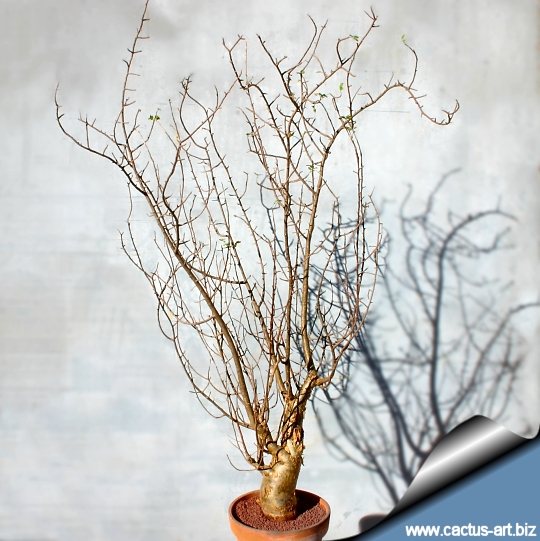
Bursera fagaroides ( in
winter without leaves)
Its aromatic resin
has been used traditionally in perfumes, incense, and oils throughout
the centuries. The copal incense can be burned on a incense burning disk,
its smell is said to calm and clear the mind.
|
|
|
|
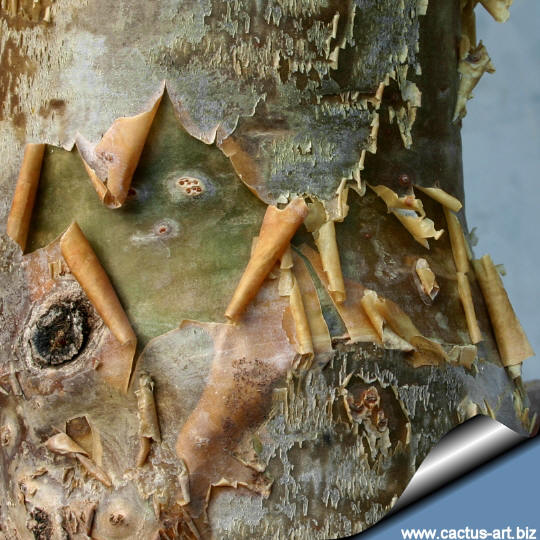
The trunk has papery
peeling bark
|
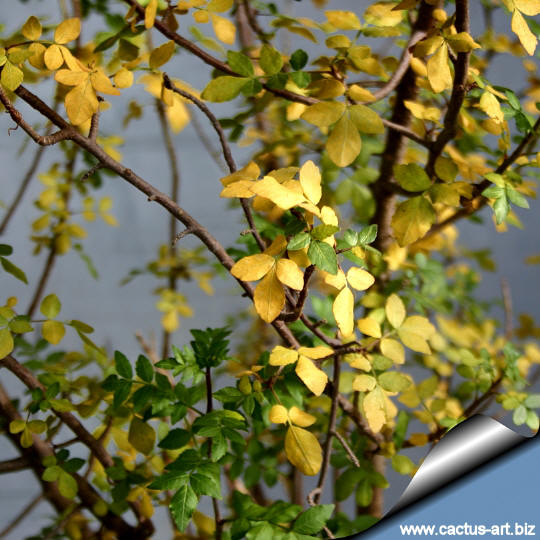 |
|
|
|